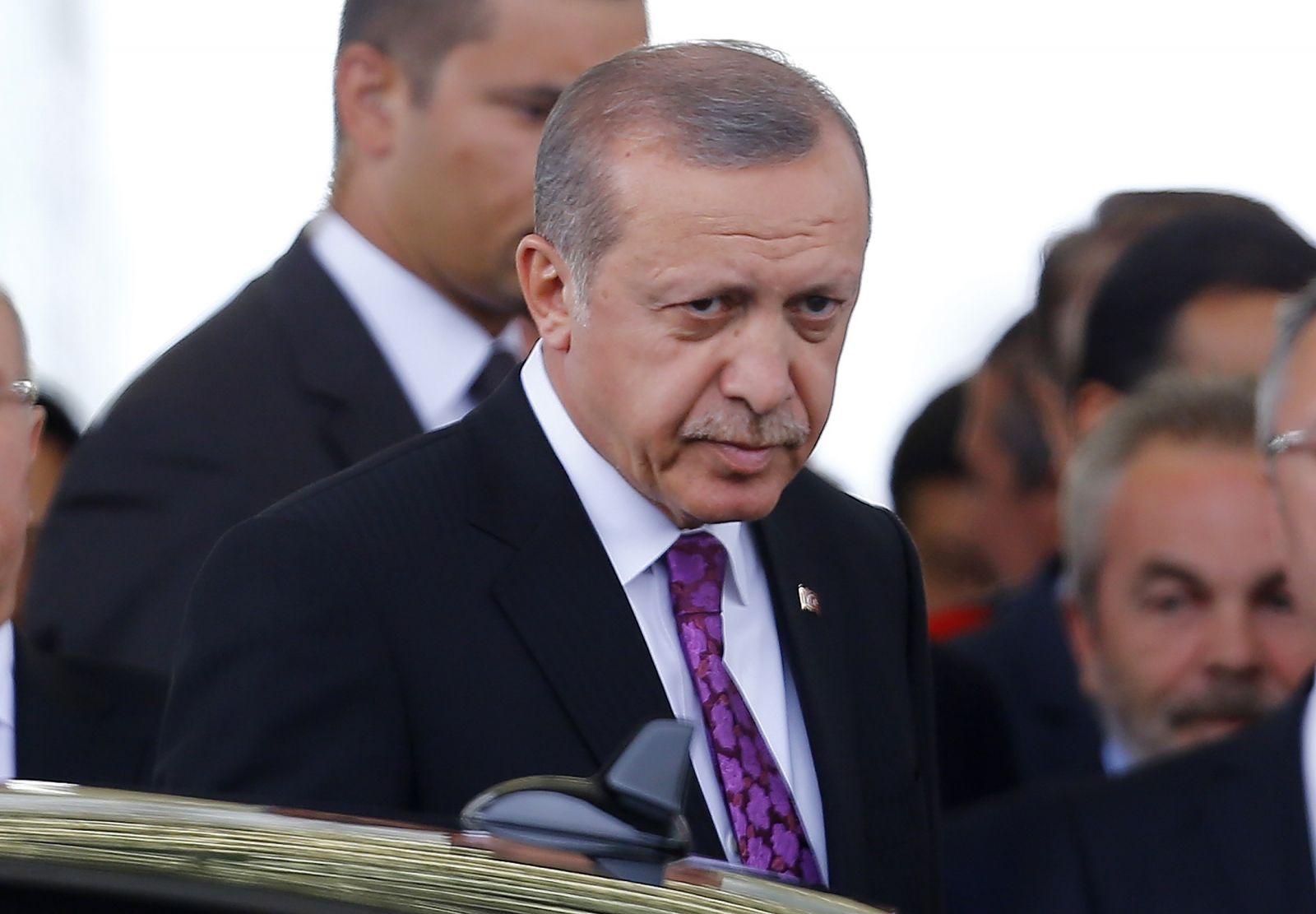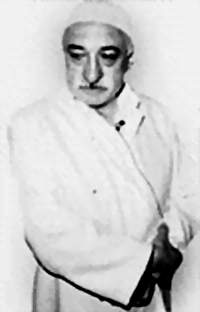CRAZED FROM THE CRADLE
The Weird Roots of American Imperialism
By James (Cem) Ryan
How beautifully written the American Declaration of Independence. How stirring the claims pronounced by the Founding Fathers, “self evident” truths about equality and the endowment of rights by the deity, all dogmatically unassailable. Add to this heady nectar the assertion that “Laws of nature and of Nature’s God” sanction, and indeed entitle, the new country to rebel from tyrannous England and establish a new government. The rights of the people, indeed people everywhere, were dictated, not by government decree or any man, but by God. And America became one nation under God to whom schoolchildren in America daily pledge. Can there be any higher entitling authority?
With the righteousness of their actions derived from and affixed by the deity, America’s Founding Fathers double-stitched their assertion of independence from below, that is, from the people themselves. While governments are created and organized by men, the powers inherent in government are derived “from the consent of the governed.” And governments destructive to the natural and divine rights of man can be altered or even abolished by the people under its rule. In other words, the right of revolution is implicit in the right and responsibility of government. The reason by which the implication of liberty was enlarged to sanction the self-determination of a group appears in the Declaration of Independence. It proclaimed that men, free and equal, instituted government and consented to its powers in order to protect the inalienable natural rights with which their Creator had bestowed them.
Nature’s God had a clear purpose intuited the founding fathers. America was the fortunate child of a beneficent, protective deity, which shed grace and moral justification on the new land and on its governed, the second generation of God’s chosen people, the first being the Biblical Israelites. The late Professor Albert Weinberg of Johns Hopkins University, author of that magisterial work on American expansionism, Manifest Destiny, adds that “the first doctrine which reflected the nationalistic theology […] was that of God’s decree of independence.” [1] The Declaration of Independence also reflected the first governmental demonization of the American Indians. The freedoms given by God to the freshly minted Americans in their Declaration of Independence did not apply to “the merciless Indian Savages whose known rule of warfare, is an undistinguished destruction of all ages, sexes and conditions.” [2] Thus the Indians were damned by God’s mouth, the same mouth that inspired the framers of the above cited document of freedom, primarily from the pen of Thomas Jefferson. In for a penny, in for a pound! Thus on July 4, 1776, the birth of the nation in Philadelphia, Pennsylvania, the first war against terror was officially declared by the Continental Congress on behalf of themselves, the invading and occupying power, America, against the aboriginal inhabitants and primordial owners of the land of that appropriating new nation. And the “Indian Savages” remain condemned to this moment in the catalyzing document that launched the American republic. Frozen in time as “merciless” terrorists, Native Americans are marked by the original sin of the white man’s appropriation. The irony lies too deep for tears.
Baby Steps, Giant Swallows
The destruction from within of their much vaunted and hotly contested liberty was of grave concern to America’s Founding Fathers. Tere was much worry about the control of possible violence and probable factionalism—the new Constitution was still controversial. James Madison first advocated in the Federalıst Papers growth beyond the original thirteen colonies in 1788. For Madison, safety resided in numbers and dispersion. “Extend the sphere,” he said writing as Publius in Federalist #10. [3] This would soon mean products as well as land and would provide the economic impetus for what would become the self-assigned destiny of America. The quip about “extending the sphere” would be slightly restated fifty years later by Andrew Jackson, the George W. Bush of his day, as“extending the area of freedom.” “Extend” would become a codeword for dispossessing, cheating, and disposing of southern American Indians along with forcibly annexing Texas from Mexico. [4]
Expansion for expansion’s sake was not some abstract ideal. Many thought—and not just abolitionists—that the insatiable demand for cotton by England, and the arable land for the southern slavers to grow it, were the true fuels for expansion. Historian William Appleman Williams describes this condition as “the American farm businessmen who were in a quasi-colonial position inside their own national economy” while operating as“economic imperialists” abroad.[5]
By expanding the territory the potential for passionate insurrection, while not eliminated, would at least be controlled by the wider representation in government and the resulting variety and multiplicity of issues. These “issues” had already coalesced into the agrarian versus the cosmopolitan argument, that is, agricultural interests posed against the monetary banking power of the cities. Let those passions be nurtured to the broader common good, Madison said, and over a wider range, both intellectually and geographically. And of course, this would be all in the best interests of the electorate.
As Madison wrote: Extend the sphere, and you take in a greater variety of parties and interests; you make it less probable that a majority of the whole will have a common motive to invade the rights of other citizens; or if such a common motive exists, it will be more difficult for all who feel it to discover their own strength, and to act in unison with each other. [6]
Thus the risk of violent factionalism would be avoided. Let the passions prevail, allow the people a voice, although a marginal one. Control was the key. Divide and diffuse. By extending the sphere of political representation, the heat of disagreement is dissipated and factionalized, like coalition governments in parliamentary democracies.
Ever analytical in justifying its actions, ever striving to be unique among any and all nations, John Jay similarly extolled some differences between the young America and its former parent, England. That Jay considered post-colonial America to be the nucleus for a much wider domain is obvious. He wrote:
It has often given me pleasure to observe, that independent America was not composed of detached and distant territories, but that one connected, fertile, wide spreading country was the portion of our western sons of liberty. Providence has in a particular manner blessed it with a variety of soils and productions, and watered it with innumerable streams, for the delight and accommodation of its inhabitants. A succession of navigable waters forms a kind of chain round its borders, as if to bind it together; while the most noble rivers in the world, running at convenient distances, present them with highways for the easy communication of friendly aids, and the mutual transportation and exchange of their various commodities. [7]
Jay was border-conscious and, like Jefferson, suspicious of Spain and France. These fears would later be heightened by Jefferson’s Louisiana Purchase in 1803. The concerns then shifted from commercial navigation of the Mississippi to protecting its mouth at New Orleans. And this focused American eyes on Cuba. The American fixation on Cuba began even earlier. In 1761, Benjamin Franklin spoke about Cuba and Mexico as being next on the list of acquisitions. But it was Jefferson who was fixated on the Black Pearl of the Antilles. He viewed the island as a mere appendage of Florida and a natural way to expand the new republic. In addition to its geopolitical strategic importance, Cuba was the center of the slave trade; this was of great interest to the slave-holding southern states as a way to expand economic and political power. Cuba entering the union as Texas had would prove a boon for the slave states. Thus began the long-standing national fixation on Cuba spanning almost three centuries as a natural protector of the southern border of the United States and now for decades a threat. Sounding like Bush and Cheney, John Jay made the claim that America’s security concerns alone justified expansion. [8] Jefferson wrote:
Spain thinks it convenient to shut the Mississippi against us on the one side, and Britain excludes us from the St. Lawrence on the other; nor will either of them permit the other waters, which are between them and us, to become the means of mutual intercourse and traffic. From these and such like considerations, which might if consistent with prudence, be more amplified and detailed, it is easy to see that jealousies and uneasiness may gradually slide into the minds and cabinets of other nations; and that we are not to expect they should regard our advancement in union, in power and consequence by land and by sea, with an eye of indifference and composure. [9]
Jefferson was also uneasy about fledgling America falling prey to the talons of foreign powers. In an April 27, 1809 letter to James Madison, then President of the United States, Jefferson expressed his deep concern about the ambitions of Napoleon Bonaparte toward the Spanish colonies, particularly Mexico and Cuba. Not only was Jefferson anticipating the imperialistic Spanish-American war almost a century later, he poked his finger into the open wound that describes relations between the United States and Cuba to this day. As he noted below:
He [Napoleon] ought the more to conciliate our good will, as we can be such an obstacle to the new career opening on him in the Spanish colonies. That he would give us the Floridas to withhold intercourse with the residue of those colonies, cannot be doubted. But that is no price; because they are ours in the first moment of the first war; and until a war they are of no particular necessity to us. But, although with difficulty, he will consent to our receiving Cuba into our Union, to prevent our aid to Mexico and the other provinces. That would be a price, and I would immediately erect a column on the southernmost limit of Cuba, and inscribe on it a ne plus ultra as to us in that direction. We should then have only to include the north in our Confederacy, which would be of course in the first war, and we should have such an empire for liberty as she has never surveyed since the creation; and I am persuaded no constitution was ever before so well calculated as ours for extensive empire and self-government.[10]
For Jefferson the primary author of the Constitution, it was quite natural that he was pleased with his efforts. Unfortunately, his“empire for liberty” was a highly selective one, excluding any and all who stood in its relentless path.
Natural God-Given Borders
The notion of a natural right to liberty soon metastasized into other rights that became self-serving vehicles to promote the national interest at the expense of other nations and other peoples. Not surprisingly there was an inherent expansionist impulse in protecting the natural and self-proclaimed God-given right of liberty. By logical extension, claims of a natural right to security, led forthwith to claims for more land, which evolved into something referred to as the Great Law of Preservation, actually an offshoot of the Hobbesian concept of self-preservation. Hobbes claimed that self-preservation, being a natural instinct, should be the root of any political philosophy or system.[11] Samuel Adams and Benjamin Franklin earlier broached this idea in 1772 in a town meeting in Boston. “The first fundamental, positive law of all common wealths or states,” said Franklin, “is establishing the legislative power. As the first fundamental natural law, also, which is to govern even the legislative power itself, is the preservation of the society.” [12]
The evolved law of self-preservation was evoked by the perceived threat posed by peaceful Canada as a possible staging area and invasion route for the British. The Continental Congress, headed by John Jay, sent a letter to the “oppressed inhabitants of Canada” defending American use of armed ships on Lake Erie and the seizure of forts at Ticonderoga and Crown Point in the war of independence from Great Britain. The letter addressed the notion of self-preservation, and soon developed into the “great law of self-preservation.” Jay went on to say “we, for our parts, are determined to live free, or not at all; and are resolved, that posterity shall never reproach us with having brought slaves into the world.” [13] Ever self-referential, apparently the notion that Jay and his forbearers, at the behest of Great Britain, had already brought hundreds of thousands of slaves into the world soon-to-be-called the United States of America did not pose the slightest disturbance.
The best defense? Expansion. For the fledgling coastline nation, with enormous Canada to its north and the Spanish to the south, had little recourse but to seek territorial buffers for its security. But what are the conditions of security? When does a nation’s right to securely exist translate into the right to seize or attack a neighbor? These post-revolutionary issues remain relevant in today’s America as well, particularly the determinants of what constitutes a security threat.
Tensions had been heightened by the presence of the Spanish in Florida and the resulting restriction of navigation rights on the Mississippi River. America claimed the right of free navigation under a Jeffersonian-espoused extension of natural law. As Weinberg notes, “the idea of natural right is apparently like a pebble which, however diminutive, on being cast into the water sets up ripples in remarkably increasing scope” [14] At that time, these “ripples” would lead to tidal waves of hallucinatory logic that eventually floated the nation’s natural right of ‘extension’ to include the full sweep of the Gulf Stream. And related ideas of ‘propinquity’ and‘contiguity’ made the Philippines contiguous to Hawaii and China both. When challenged, US Senator Albert Beveridge, the neo-con of his day, huffed, “Our navy will make them contiguous.” [15]
But Jefferson’s attention centered on the Mississippi River, particularly its mouth. As mentioned earlier, annexation of Cuba became a strategic interest to use as a bulwark for the entrance of this vital commercial artery. Jefferson led the acquisition campaign. In a letter to James Monroe, October 24, 1823 he avowed his desire for Cuba as a strategic interest of the United States, an obsession that persists to this day.
I candidly confess that I have ever looked on Cuba as the most interesting addition which could ever be made to our system of States. The control which, with Florida, this island would give us over the Gulf of Mexico, and the countries and isthmus bordering on it, as well as all those whose waters flow into it, would fill up the measure of our political well-being. [16]
When Spain ceded Louisiana to Napoleonic France tensions in America heightened further. But one morning thereafter Napoleon announced from his bath that he would sell the Louisiana Territory to America. In one sense this solved the security problem of New Orleans. But another was created, and it set a dangerous precedent, later visited tragically on the American Indians. It seems that the residents of New Orleans, preferring the more casual Spanish rule, did not like the quick flip sale by France to America. Ever concerned about internal rebellion, America acted reflexively. Thus on the day of possession President Jefferson sent in the troops. One may note that thus began the long and continuing use of America’s military to solve political problems, usually in the name of protecting its God-given democracy.
Thus Jefferson, that champion of democracy, suspended the natural, democratic right of the people of New Orleans—and greater Louisiana—to have political freedom. More specifically, he nullified their natural right to have government, in Jefferson’s language, “at the consent of the governed.”Offered neither statehood nor territorial government, they had no representation, the crucial flashpoint of the American war of revolution thirty years earlier. That these people—Indian and non-Indian both— had no natural rights whatsoever little affected Jefferson. According to Weinberg,
It is the doctrine that by the destiny manifest in geography America’s natural right to territory essential to its security must override the right of self-determination claimed by its inhabitants. Here for the first time the idea that “our rights” must not be destroyed leads to the destruction of that cornerstone of the nationalist’s natural right philosophy, the universal right to political liberty. [17]
Thinking indeed relevant today.
American imperialism of that time was focused on its own concerns about security, regardless of concerns for people like the non-citizens of Louisiana. Thus grew the flawed and heavily biased ideology that America’s—and Americans—rights always trump others. The champions of human rights became the chumps of heavy-handed enforcement. Had America revealed itself as naive? Or at best hypocritical? Or at its worst, an aggressive, dangerous imperialist power? Where in the spectrum would it reside?
Learning from its success, America convinced itself of the purity and clarity of its destiny. Experts like Weinberg speak of the pride inherent in the American achievement in democracy, with certain notable exceptions covered over by the enthusiasm of the endeavor. The deity was invoked in whose name geography and civilizations were overrun and destroyed. Shifting and ever escalating principles were developed to justify aggressive and morally questionable land grabs and the related mistreatment of aboriginal inhabitants. As for the newly obtained population of New Orleans, no consent was obtained from the governed, no offer of representation or citizenship was extended. The endeavor to expand was all, a mission designed to light the way for democracy, liberty, security, and equality not only for America, but for the world. Weinberg comments:
The logical composition of ideas may contain elements which, as the ideas enter into chemical reaction with more emotional factors, cause them to undergo precisely the transformations which their original propounders would most abhor. [18]
Retrospectively over the long sweep of history what would these original “propounders” now say? What would such a backward glimpse reveal about the America that was their dream, the endeavor to which they pledged their lives, their fortunes, their sacred honor? Would they smile beneficently? Or would their words be the dying words of the despairing Colonel Nicholson (Alec Guiness) in the film, The Bridge On the River Kwai, “What have I done?”
The Divinity of Nature
The doubling in size of America from the Louisiana Purchase did not satiate the need for more land. More land only meant more border problems. So concern continued to grow about protecting the mouth of the Mississippi River, that is, New Orleans and the delta plain. And now the strategic focus shifted to the Spanish colony, Florida. What to do? The assertion of a natural“righteousness” seemed outdated given that Florida was a dangling remnant of the original Spanish holding of what eventually became the Louisiana Purchase. Setting aside the natural right principle, nature itself was selected as the rational for extension. “Instead of reading the law of nature primarily from the heart of man,” noted Weinberg, “expansionists took to reading it from the configuration of the earth.” [19] After all, since nature had ordered all things including natural boundaries for nations, so certainly had the deity done likewise for the United States. And why not? Hadn’t God himself chosen this nation, above all others, for greatness? Ironically, given its relatively small size, the notion of natural boundaries was used in Europe as a check against expansion. Not so for bountiful America with unimaginably vast territory, recently doubled in size by Jefferson’s acquisition. America was young and fast-moving, unique among countries. What had served for parent Europe no longer served for the child. With the acquisition of the western territory, the previous notion of the Mississippi River as a quasi boundary was shattered forever. The expression “beyond the Mississippi” would later appear as a kind of Biblical “far country”—the “Great American Desert”—to which the southern Indian tribes, primarily forest people, would be banished.[20] And the original idea that the eastern slope of the Appalachian Mountains served as a border was now an historical figment of no consequence. Besides, a river can be crossed, and mountains, while arduous to scale, would never pose a barrier to the plucky, emboldened Americans. But there were big problems down south.
A look at a map reveals the concern raised by Spanish possessions, specifically Florida and Cuba. Annexing these two would impose a strategic natural barrier between the open ocean and the Gulf of Mexico thus securing the commercial and strategic significance of the Mississippi River and New Orleans. To solve the Florida problem explosive suggestions were made. America’s natural boundaries were really the Atlantic Ocean, the Gulf of Mexico, and the Mississippi river. In other words, all water boundaries east, south, and west. Also advanced was something called the “appendage theory.”This held that Florida had been affixed to the American mainland by the hand of God. The idea of God as master landscape-designer would evolve to be known as the principle of “territorial propinquity.” It held that two adjacent territories connected by a common geographical feature are considered as one combined landmass, as ligaments and muscles connect the foot to the leg to form the completed member. Geography determined everything. Only appropriate ownership was lacking. But the deity of geographical predestination would do the rest. “Unity was posited on the grounds of propinquity, enclosure by the same natural barrier, or a common territorial feature such as a river,”observed Weinberg. [21] With unchecked illogic, these principles would soon evolve into a fantasy of geographical and nautical rationalizing that would take care of Cuba and, by possibly combining sunsets and oceanic currents that burnish and bathe America, the rest of the world. God, at least the American variety, was indeed good and generous.
Expansionist Metaphysics
The babbling was epic. Everything was up for America’s taking according to the expansionists of the early 19th century. Natural boundaries are those that create economic self-sufficiency. Thus, the grain-growing upper Mississippi region is a natural partner with the land around the lower Gulf, that is, Texas. Why? Because one can’t readily transport the grain without using the river system and much of it flows through or abuts Texas. Simple enough. Thus, Texas should be considered part of the Louisiana Purchase. After all, the French discovered the Mississippi River and cruised the Texas coastline as well. Discovery and possession of the coastline presumes that such occupation includes the interior country for it is natural that one has to move inland beyond the beachhead. This is similar to the same earlier fantastic thinking inherent in the Doctrine of Discovery. This established England’s—and later America’s—claim of the northeastern coast of America because John Cabot observed the land from offshore with a deep, penetrating gaze as might some colonial Superman. In fact, this very thing, a sort of ‘gaze doctrine’ is at the heart of the logic of the Doctrine of Discovery. Incredibly, this doctrine has been codified into law via US Supreme Court decisions regarding claims of American Indians. The result? The American Indians have remained in a parent-to-child protective relationship, with the court as guardian of their rights. Poor law. Poorer Indians.
The natural boundary theory maintained that the nation holding the greatest part of a river has the right to hold the coastline at its mouth. This applied particularly to the dispute over the right to claim Florida. However, if one was arguing the case for Texas, a neat switch was in order. Here, the nation that holds the seacoast has the right to the inland area that borders the river. In other words, depending upon the natural boundary needs of America, either the vice or the versa can be applied pari passu, that is, equally.
Another watery theory dealt with the northern border and the Mississippi and St. Lawrence rivers. Since the waters merge and mingle at some points, such blending was deemed to constitute a “territorial nexus.” Thus the waterways should belong to the same country, in this case, America. But surprise, surprise! Someone suggested that in upholding that theory, the United States could just as logically belong to Canada. The mingling-of-waters theory was thereafter sent out to sea.
None of the contradictory, self-serving theorizing affected Representative John A. Harper one bit. He had a clear view of the American future. Addressing Congress in 1812, invoking God as the usual trump card, he extolled:
To me, sir, it appears that the Author of Nature has marked our limits in the south, by the Gulf of Mexico; and on the north, by the regions of eternal frost. [22]
These regions of eternal frost are now, nearly two hundred years later, considerably less frosty due to global warming. Yet they remain disputatious. On August 2, 2007, two Russian submersible vessels embedded a Russian flag two miles beneath the polar ice cap at the North Pole. The titanium flag was planted on the Lomonosov Ridge which is an extension of Russia’s continental shelf. The New York Times reported:
At least one country with a stake in the issue registered its immediate disapproval of the expedition. “This isn’t the 15th century,” Peter MacKay, Canada’s foreign minister, said on CTV television. “You can’t go around the world and just plant flags and say, ‘We’re claiming this territory’.” [23]
Well who, aside from Mr. MacKay, says so? Apparently one can, and already has, and no doubt will continue to do so, particularly when oil and gas reserves portend below, particularly in this age of post-flag colonialism. Now countries just send in their companies, or in the case of America, its bombs and its mercenaries or its puppet-nation’s resources and military assets. The current use of NATO, particularly Turkey, in North Africa and the Middle East is a prime example.
One of the strangest applications allowed that the Gulf Stream should be considered an extension of the Mississippi River, thus carrying expansionists (and their arguments) well out to sea. None other than Thomas Jefferson found the notion plausible. He wrote to James Monroe in 1806:
We begin to broach the idea that we consider the whole Gulph Stream as of our waters, in which hostilities and cruising are to be frowned on for the present, and prohibited so soon as either consent or force will permit us. [24]
What? Thus Ireland, washed by the Gulf Stream, could be considered part of America.
In 1804, another expansionist, William Chandler, celebrated the Fourth of July with the bombastic warning that the Louisiana Purchase was only the beginning.“Our boundaries shall be those which Nature has formed for a great, powerful, and free State.” [25] Chandler went on to assert that the natural southern expanse for the United States was the Isthmus of Panama, perhaps on the withering principle of the withering waistline between two oceans. But dig a canal, mingle the waters, and the world could become one big Yankee doodle toy.
James (Cem) Ryan, Ph.D.
14 July 2012
_________________________________________________________________________
ENDNOTES
[1] Albert K. Weinberg, Manifest Destiny: A Study of Nationalist Expansionism in American History, p. 17.
[2] Declaration of Independence, “He has excited domestic insurrections amongst us, and has endeavoured to bring on the inhabitants of our frontiers, the merciless Indian Savages, whose known rule of warfare, is an undistinguished destruction of all ages, sexes and conditions.” [3] Federalist Papers, p. 78
[4] Today similar Orwellian words can be heard dropping daily from the lips of the American politicians as they bring democracy, peace, and freedom to the Iraqi people, and indeed all over the Middle East. Let’s brush up our Shakespeare and remember what he said: “And let us bathe our hands in Caesar’s blood/Up to the elbows, and besmear our swords;/Then walk forth, even to the market-place,/And waving our red weapons o’er our heads,/Let’s all cry, “Peace, Freedom, and Liberty!”
(Julius Caesar, III, I, 106-110).
[5] William A. Williams, The Roots of Modern American Empire, p. 22.
[6] Federalist Papers, p. 78.
[7] Ibid., p.32. [8] Richard W. Van Alstyne, The Rising American Empire, pp. 88,89,148-151.
[9] Federalist Papers., p. 41.
[10] Thomas Jefferson, The Writings of Thomas Jefferson, vol. 12, p. 277.
[11] Thomas Hobbes, Leviathan, Chapter XIV, 1. “THE RIGHT of Nature, which writers commonly call jus naturale, is the liberty each man hath to use his own power as he will himself for the preservation of his own nature, that is to say, of his own life; and consequently of doing anything which in his own judgment and reason he shall conceive to be the aptest means thereunto.”
[12] Samuel Adams. Benjamin Franklin. The Report of the Committee of Correspondence to the Boston Town Meeting, Nov. 20, 1772,
[13] John Jay, Journals of the Continental Congress, “Letter to the Inhabitants of Canada,” May 29, 1775, Avalon Project, Yale University.
[14] Weinberg, op. cit., p. 27.
[15] Ibid., p. 68.
[16] Thomas Jefferson, Letter to President of the United States, James Monroe, October 24, 1823,
[17] Weinberg, op. cit, p. 34.
[18] Ibid., p. 39.
[19] Ibid., p. 43. [
20] Richard Van Alstyne, op. cit., p. 94. Van Alstyne writes about the terra incognita in the American west: “Expeditions which ventured, during the first three decades of the nineteenth century, across the treeless plains to the Rockies and beyond into the alkali basin of the Great salt Lake reported on these barriers; and until the mid-century the maps of the United States labeled the region as ‘the Great American Desert’.”
[21]Weinberg, op. cit., p. 50.
[22] Ibid., p. 53.
[23] C.J. Chivers, “Russians Plant Flag on the Arctic Seabed.” The New York Times. August 3, 2007.
[24] Thomas Jefferson, The Writings of Thomas Jefferson, vol. 11, p. 111.
[25] Frederick Merk, Manifest Destiny and Mission in America, p. 13. ____________________________________________________________
BIBLIOGRAPHY
Adams, Samuel. Franklin, Benjamin. The Report of the Committee of Correspondence to the Boston Town Meeting. Nov. 20, 1772,
Chivers, C.J. “Russians Plant Flag on the Arctic Seabed.” The New York Times. August 3, 2007.
Declaration of Independence, United States.
Federalist Papers, The. Signet Classics, New York, 2003. Hobbs, Thomas. Leviathan. Oxford University Press, New York, 2008.
Jay, John. Journals of the Continental Congress, Letter to the Inhabitants of Canada; May 29, 1775. The Avalon Project, Yale University.
Jefferson, Thomas. Letter to President of the United States, James Monroe, October 24, 1823.
Jefferson, Thomas. The Writings of Thomas Jefferson. 20 volumes, Lipscomb, Andrew A. Albert Ellery Bergh, and Richard Holland Johnson, eds. Thomas Jefferson Memorial Association of the United States, Washington, DC, 1903.
Merk, Frederick. Manifest Destiny and Mission in America. Alfred Knopf, New York, 1963.
Van Alstyne, Richard W. The Rising American Empire. W.W. Norton, New York, 1975.
Weinberg, Albert K. Manifest Destiny. The Johns Hopkins Press, Baltimore, 1935.
Williams, William Appleman. The Roots of Modern American Empire. Vintage Books, New York, 1970. ______________________________________________________________________________________
TO LEARN MORE ABOUT THE REAL HISTORY OF AMERICA, CLICK ON AND READ SHOUTS






